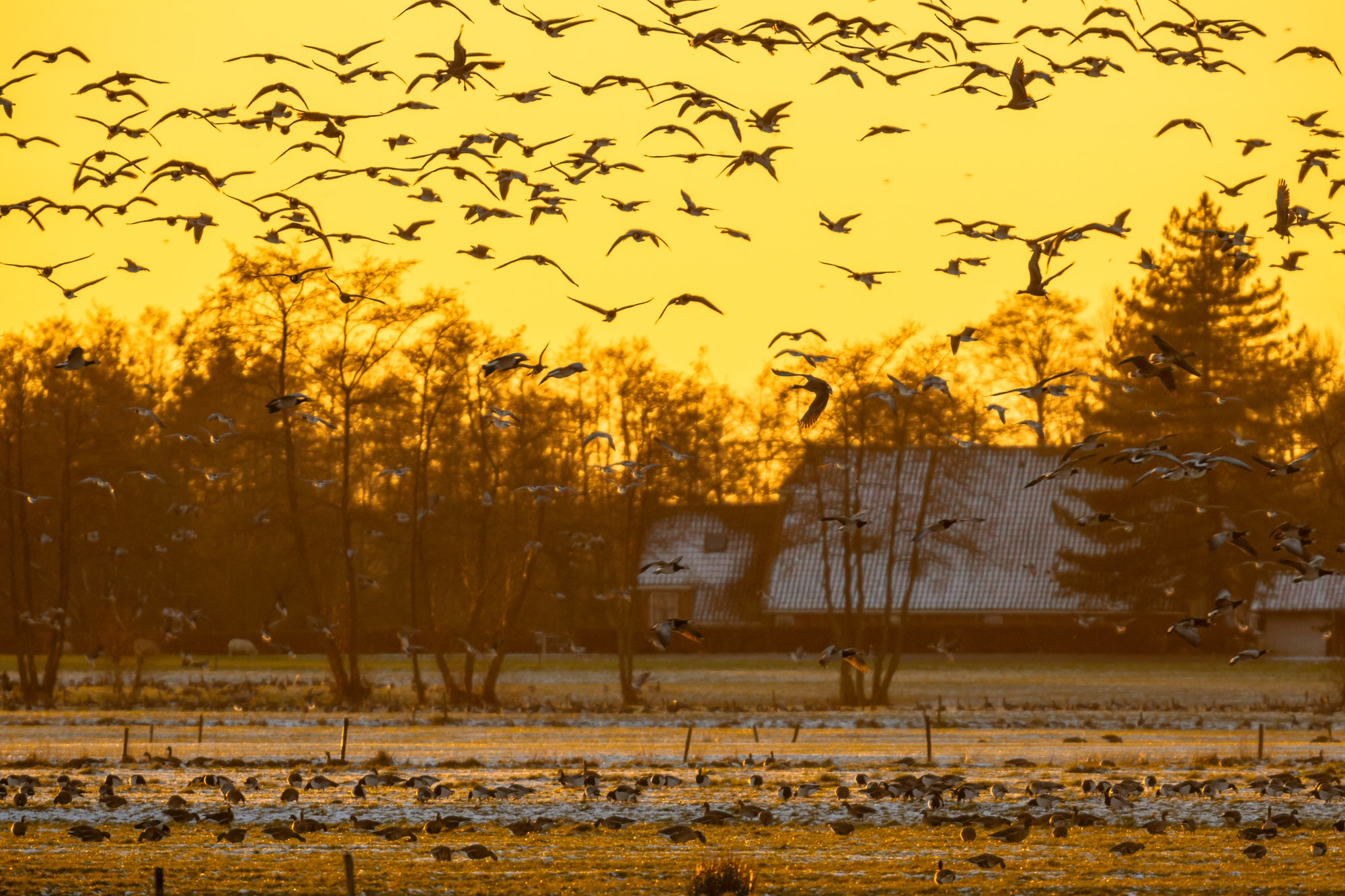

The Myth: Wind Turbine’s Kill Birds
Debunking the Myth of Wind Turbine Bird Kills
Birds are the last remnants of dinosaurs on earth. And a study published in the journal Science pointed out that in North America, the population of birds fell 30 percent since 1970. That’s alarming because birds are an excellent indicator of environmental health.

The study coincided with the start of a massive build out of wind farms across North America. That combined heightened awareness of bird populations with huge swaths of giant fans on the landscape. And windmills kill birds in gruesome and obvious ways.
That was part of the problem. The bird kills were easy to see and count. Go to the base of any windmill and you’ll see bird carcasses. It’s like seeing dead deer on the highway. They are obvious and so is the cause of death.
A recent study published by Dr. Erik Katovich of the University of Geneva in Environmental Science & Technologydisputed that assumption.
He approached the problem from a different angle. The study used National Audubon Society bird count data to analyze populations. Then they compared the number of birds prior to the windfarms, with the number remaining. Here’s what The Economist said about the study:
Dr Katovich made use of the Christmas Bird Count, a citizen-science project run by the National Audubon Society, an American non-profit outfit. Volunteers count birds they spot over Christmas, and the society compiles the numbers. Its records stretch back over a century.
Dr Katovich assumed, reasonably, that if wind turbines harmed bird populations, then the numbers seen in the Christmas Bird Count would drop in places where new turbines had been built. He combined bird population and species maps with the locations and construction dates of all wind turbines in the United States, with the exceptions of Alaska and Hawaii, between 2000 and 2020. He found that building turbines had no discernible effect on bird populations.
Turns out that wind turbines aren’t as bad on bird populations as originally thought. We let our eyes bias our opinion. We see the dead birds, but the study shows that they don’t have a measurable impact on population. However, the study went on to examine bird populations in areas with active oil drilling. In those areas, bird populations fell 15% to 25%. From the abstract of the article:
I combine longitudinal micro-data from the National Audubon Society’s Christmas Bird Count with geolocated registries of all wind turbines and shale wells constructed in the contiguous US during this period to estimate the causal effects of these contrasting types of energy infrastructure on bird populations and biodiversity – key bellwethers of ecosystem health.
Results show that the onset of shale oil and gas production reduces subsequent bird population counts by 15%, even after adjusting for location and year fixed effects, weather, counting effort, and anthropic land-use changes. Wind turbines do not have any measurable impact on bird counts. Negative effects of shale are larger when wells are drilled within important bird habitats.
These data imply that we have an observational bias – we overcount observed deaths and undercount other influences.
Dr. Katovich’s study demonstrates that the unobserved impacts on birds are more important. Noise pollution, habitat disruption (by roads, drill pads, noise, and noxious smells), and human presence have a larger effect on bird populations.
Frankly, I’m glad they published this study. The “wind farms kill birds” chestnut is too easy for anti-green energy folks to trot out. The study quantifies changes in bird populations in areas that have new energy development. And it clearly shows that oil and gas development had a much larger impact on those populations.
So, keep that in mind when someone uses bird kills to dispute wind energy. It’s just not the case and (thanks to Dr. Katovich) we can bring receipts.
For the Good,
The Mangrove Investor Team
Numbers You Need to Know
1877
Nearly a century before anyone thought seriously about wind-powered electricity, a Scotsman named James Blyth built the world’s first wind turbine in his front yard. (Advanced Physics)
2,098 TWh
The global 2022 electricity generation from wind was 2,098 terawatt-hours (TWh).(Our World In Data)
7.96 GW
Its capacity of 7.96 GW means it dwarfs the competition, and it’s already been penned in to increase up to 20 GW by 2025. That’ll give China’s Gansu Wind Farm the ability to power a mindblowing 15 million homes. (The Eco Experts)
What’s New in Sustainable Investing
The future of investing: How sustainability is shaping investor choices according to Morgan Stanley
The “Sustainable Signals” report shows a robust and growing interest in sustainable investing. As per the findings, a substantial 77% of investors are keen on sustainable investing, with 54% planning to increase their sustainable investments in the forthcoming year. (Fintech Global)
ESG Fund Returns Recover, but Still Trail Conventional Peers by a Small Margin
On the whole, sustainable funds lagged their conventional peers by a small margin, with 53% of sustainable funds landing in the bottom half of their respective categories. (Morning Star)
Video Of The Week
Blades vs Wings: Wind Turbine Technologies to Save Bats and Birds
Are wind turbines indiscriminate bird killers or are they the renewable energy technology that will ultimately save them?




